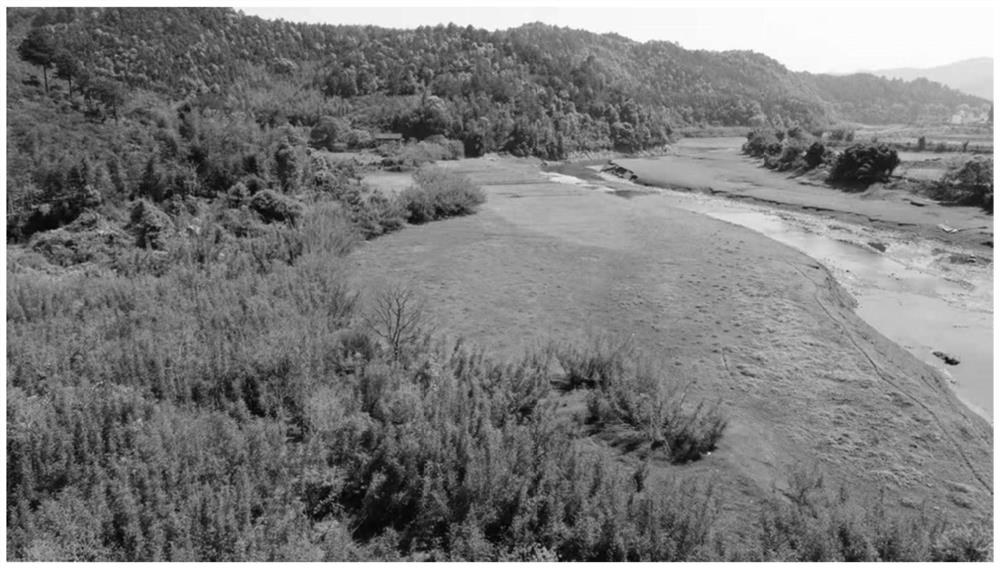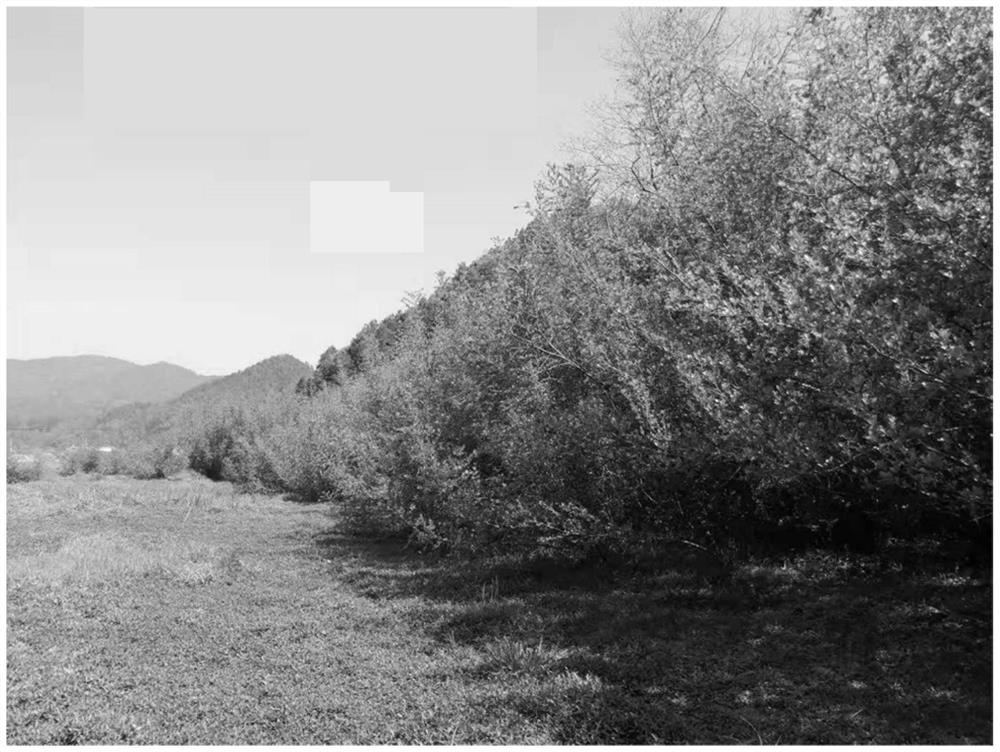Wetland hydro-fluctuation belt vegetation recovery method based on paliurus ramosissimus
A technology of vegetation restoration and majiazi, which is applied in the direction of soil preparation, botany equipment and methods, and plant cultivation, can solve problems such as high soil barrenness, landslides, collapses, debris flows, and poor water resistance, so as to avoid soil loss, The restoration effect is obvious, and the effect of satisfying the habitat growth
- Summary
- Abstract
- Description
- Claims
- Application Information
AI Technical Summary
Problems solved by technology
Method used
Image
Examples
Embodiment 1
[0031] A method for restoring vegetation in a wetland drawdown zone based on Majiazi, comprising the following steps:
[0032] S1. Excavate planting holes: excavate planting holes within 1m from the revetment of the water-fluctuating zone, place a double-layer network structure woven by straw on the inner wall of the planting hole in advance, and fill the double-layer network structure with original planting of safflower seedlings earth;
[0033] S2, planting of sargassum: the seedling height is 25~40cm the sargassum seedlings are transplanted in the planting hole, the planting density of samurai is horizontal 30cm * vertical 30cm, gradually backfill the soil after fixing the seedlings, evenly arrange the nutrient soil on the surface, Then sow the plant seeds on the nutrient soil; water the fixed root water to complete the planting of the vetch;
[0034]S3. Cultivation of flood-tolerant herbaceous plants: When it is in the dry season and the soil humidity is 60-70%, spread th...
Embodiment 2
[0036] A method for restoring vegetation in a wetland drawdown zone based on Majiazi, comprising the following steps:
[0037] S1. Digging planting holes: excavate planting holes within 2.5m from the revetment of the water-fluctuation zone, and place a double-layer network structure woven by straw on the inner wall of the planting hole in advance. The layers are connected to each other. The mesh structure is filled with the original planting soil of the Majiazi seedlings;
[0038] S2, planting of sargassum: the seedling height is the 30~50cm of sargassum seedlings transplanted in the planting hole, the planting density of samurai is horizontal 40cm * vertical 60cm, gradually backfill soil after fixing the seedlings, evenly arrange nutrient soil on the surface, Then sow the plant seeds on the nutrient soil; water the fixed root water to complete the planting of the vetch;
[0039] S3. Planting of flood-tolerant herb plants: When it is in the dry season and the soil humidity is...
Embodiment 3
[0042] A method for restoring vegetation in a wetland drawdown zone based on Majiazi, comprising the following steps:
[0043] S1. Excavate planting holes: excavate planting holes within 1.5m from the revetment of the water-fluctuating zone, place a double-layer network structure woven by straw on the inner wall of the planting hole in advance, and fill the double-layer network structure with native seedlings planting soil;
[0044] S2, planting of sargassum: the seedling height is 25~50cm the sargassum seedlings transplanted in the planting hole, the planting density of samurai is horizontal 40cm * vertical 50cm, gradually backfill the soil after fixing the seedlings, evenly arrange the nutrient soil on the surface, Then sow the plant seeds on the nutrient soil; water the fixed root water to complete the planting of the vetch;
[0045] S3. Planting of flood-tolerant herbs: When it is in the dry season and the soil humidity is 85-90%, plant the seeds of Polygonum, Milkvetch a...
PUM
| Property | Measurement | Unit |
|---|---|---|
| Horizontal spacing | aaaaa | aaaaa |
| Vertical spacing | aaaaa | aaaaa |
Abstract
Description
Claims
Application Information
 Login to View More
Login to View More - R&D
- Intellectual Property
- Life Sciences
- Materials
- Tech Scout
- Unparalleled Data Quality
- Higher Quality Content
- 60% Fewer Hallucinations
Browse by: Latest US Patents, China's latest patents, Technical Efficacy Thesaurus, Application Domain, Technology Topic, Popular Technical Reports.
© 2025 PatSnap. All rights reserved.Legal|Privacy policy|Modern Slavery Act Transparency Statement|Sitemap|About US| Contact US: help@patsnap.com


